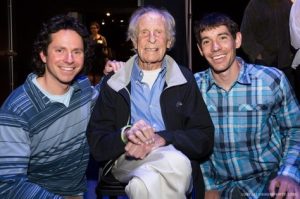
Not surprisingly, over the years, UW geology and geophysics students and faculty have enjoyed and excelled at rock climbing and mountaineering. In the 1930s, professor-to-be Howard Coombs (1906-1990) was a park ranger at Mt. Rainier, climbed the mountain more than 30 times, and wrote his dissertation (1935) on geology of the National Park. Next-generation professor Joe Vance (1930-2021) was amongst the elite first 10 climbers who summited all 100 of Washington’s highest peaks. Former graduate student Margi Rusmore (M.S. 1982, Ph.D. 1985) was already a skilled climber in her teens and in 1978 was part of the team that put the first American women on the summit of Annapurna. Joining this list of elite climbers is recent graduate Colin Haley (B.S. 2009), an active, world-renowned mountaineer (https://colinhaley.com/).
It’s not possible to discover much of what must be a prodigious and mostly undocumented history of all the UW geo-climbers over the years. But a reference we found to “Jim Crooks” as a climber set us on a quest to learn more. James William Crooks (1921 – 1991) came to our attention when we looked into the history of the Afton Woolley Crooks and James William Crooks Endowed Scholarship in Geological Sciences. Afton Wooley (1925 – 2018) was an English major (B.A. 1947) who met Jim (B.A., 1952 in Geology and Geography) at UW while she was pursuing graduate studies. Afton and Jim married in 1954 and moved to northern California, where she became a university administrator, while Jim established a career as a cartographer and commercial artist.
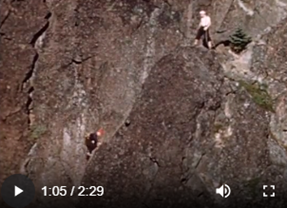
Like many of his generation, Jim had served in World War II before finishing his degree. He also, before and during his military service, spent time as a serious climber. The first record we have found of Jim’s climbing is of his “first ascent” of Sinister Peak in 1939. In the next year, Crooks (white hat) can be seen on a preserved film leading 17-year-old Fred Beckey (red hat) up the southeast face of The Tooth, near Snoqualmie Pass (https://www.mntnfilm.com/en/film/ascent-of-the-tooth-1940). That same year, Crooks participated in first ascents of Forbidden Peak, Garfield Mountain (South Route), East Peak of Mount Arriva, and North Ridge of Cutthroat Peak.
In perusing the records of Seattle’s Mountaineers organization (whose first president, in 1906, was UW founding Geology Professor Henry Landes!), we next found Jim Crooks in 1942 listed as serving as a Sergeant in the Army. And the next “first ascent” we found was in 1944—and far from Washington State—Conn’s East, Seneca Rocks, West Virginia. What was Jim doing there? You might have guessed.
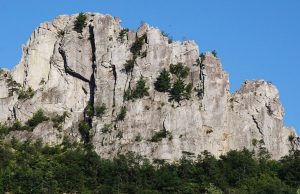
The United States’ famed 10th Mountain Division (U.S. Army) primarily trained in Colorado at Camp Hale. Jim Crooks served as a Sergeant in the 86th Infantry of the Division, where he taught skiing and climbing to the troops. When the 10th Mountain Division started planning maneuvers for the Italian Apennines, they realized that a more realistic geologic and climbing analogue was at Seneca Rocks in West Virginia. Seneca Rocks is a 900-foot blade of Silurian, quartz-rich Tuscarora Sandstone [an equivalent formation underlies climbing routes in the Shawangunks or “Gunks” in New York State]. So, in 1943, instructors were sent to Seneca Rocks to set up a climbing school in preparation for the assault on Mt. Belvedere in Italy.
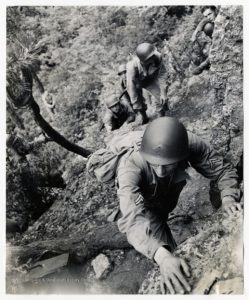
Jim Crooks’ 86th Infantry left for Italy on 11 December 1944; upon arrival they moved toward Mt. Belvedere to prepare for a surprise mountain attack to capture the high ground from German occupation. There were 4-5 feet of snow on the ground; each soldier carried a pack of 45-55 pounds, including four blankets because sleeping bags were not available. At the onset, the unit was responsible for defending an area of rugged terrain. “The (Germans) held all the high ground, and one felt like he was in the bottom of a bowl with the enemy sitting on two-thirds of the rim looking down upon you,” a soldier said.
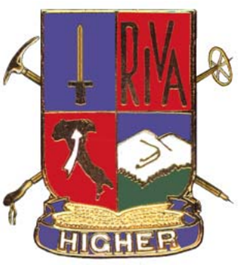
To take Mt. Belvedere, the soldiers first had to capture “Riva Ridge.” The attack on Riva Ridge kicked off at 7:30 p.m. Feb. 18 with 700 1-86th Infantry Soldiers beginning the 1,700- to 2,000-foot climb. In military history, the 10th Mountain Divisions attack on Mt. Belvedere is renowned for its daring, its difficulty, but ultimately its success (see, e.g., Bootprints in History: Mountaineers take the Ridge). Fortunately, Jim Crooks came home in one piece, and with help from the GI Bill, earned his degree in 1952.